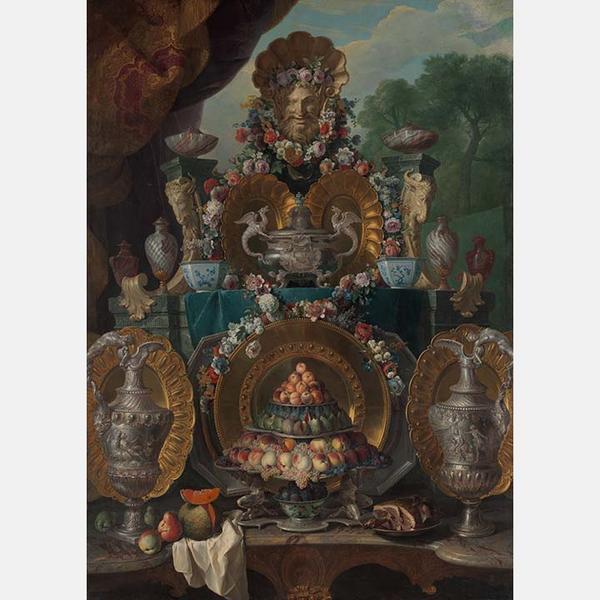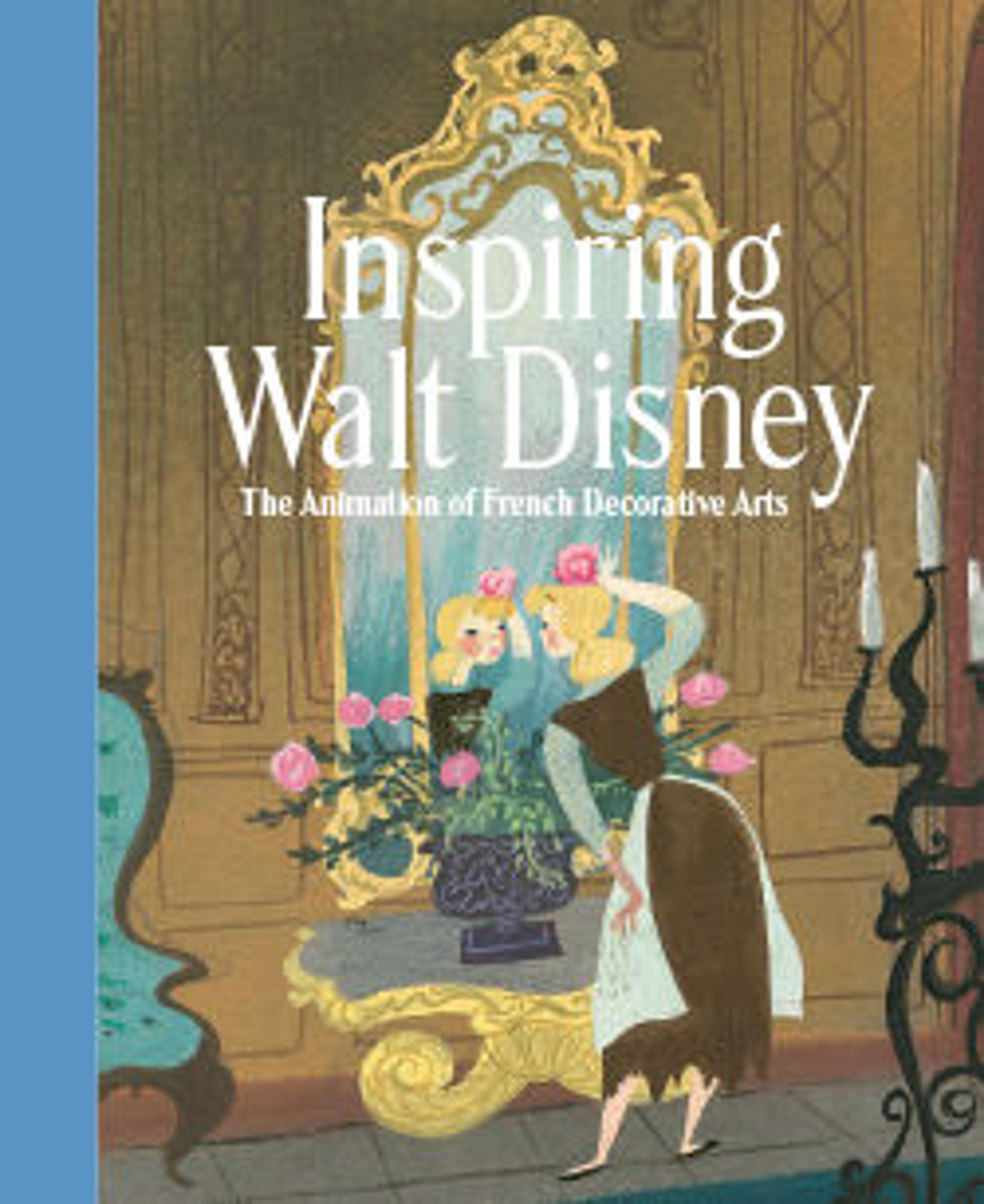Still Life with Silver
Artwork Details
- Title: Still Life with Silver
- Artist: Alexandre François Desportes (French, Champigneulle 1661–1743 Paris)
- Date: 1720s
- Medium: Oil on canvas
- Dimensions: 103 x 73 3/4 in. (261.6 x 187.3 cm)
- Classification: Paintings
- Credit Line: Purchase, Mary Wetmore Shively Bequest, in memory of her husband, Henry L. Shively, M.D., 1964
- Object Number: 64.315
- Curatorial Department: European Paintings
Audio

2328. Still Life with Silver
Inspiring Walt Disney
PAIGE O'HARA:
This painting by Alexandre François Desporte depicts the splendid hospitality of an 18th century court banquet, where the interplay between food and music, dance and decoration was designed with a supreme goal: to impress guests.
On the bottom tier, we see enormous silver urns and gold-plated platters. Above, on the second tier, is a tureen with dragon handles, imported blue and white Japanese porcelain, and vessels carved from stone. At the very top, presiding over the festivities, is the marble mask of a satyr, a figure associated with pleasure in Greek mythology. His cheeky grin recalls the character “Lumiere” from Beauty and the Beast.
The porcelain displayed in front, was produced at the Sèvres manufactory, located just outside of Paris. Dishes like these would have graced an aristocratic table of the era.
WOLF BURCHARD:
You have all these different shapes that are elaborately modeled and painted. It’s suggestive of how 18th century tables were animated through porcelain. It’s this idea of ephemeral entertaining and giving your guests joy through food underlined by the way you’re serving it. You’re not serving it in ordinary dishes, but using the most exquisite porcelain that is available, and Sèvres was producing, at the time, the most elaborate porcelain.
PAIGE O'HARA:
During one of the liveliest scenes featured in Beauty and the Beast, the household objects welcome Belle to the castle with a grand meal, as they sing “Be our guest! Be our guest!” reminding her that a French meal is “never second best.”
Thanks to its memorable music, charming characters, and artistic and technical innovation, Beauty and the Beast became a phenomenal success. In 1991 it was the first animated feature film to be nominated for Best Picture at the Academy Awards, but the roots of some of its inspiration stretch back centuries.
More Artwork
Research Resources
The Met provides unparalleled resources for research and welcomes an international community of students and scholars. The Met's Open Access API is where creators and researchers can connect to the The Met collection. Open Access data and public domain images are available for unrestricted commercial and noncommercial use without permission or fee.
To request images under copyright and other restrictions, please use this Image Request form.
Feedback
We continue to research and examine historical and cultural context for objects in The Met collection. If you have comments or questions about this object record, please contact us using the form below. The Museum looks forward to receiving your comments.
